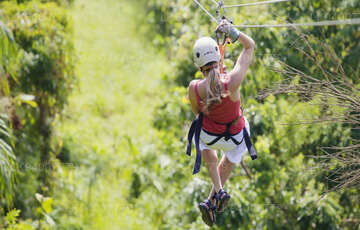

Ciudad de Colombo
Colombo, la capital de Sri Lanka, es una ciudad dinámica que combina tradición y modernidad. Luce arquitectura colonial, mercados animados y tranquilos templos budistas. Con una gastronomía diversa, un horizonte en crecimiento y hermosas playas, es un vibrante centro de negocios, cultura y turismo, ofreciendo una puerta de entrada para explorar las maravillas de Sri Lanka.
St Thomas Chapel
Ginthupitiya is a very busy region that is part of Kotahena (Colombo 13). Bustling with people; the place is jam-packed with residences, commercial buildings, public buildings, churches and temples. Ginthupitiya is also the home of the first Anglican Church in Sri Lanka, St Thomas’ Church. This simple church was built in 1816 by the British Governor Robert Brownrigg. However, the roots of its history run much deeper into the annals of time.
The History of St Thomas’ Church
Let us go backward in time to approximately 2000 years ago. It was the era when the Roman empire was on the rise. Jesus had died on the cross; crucified by the Romans who possibly considered him a political threat and a troublemaker. His twelve disciples (the Apostles) were devastated and tried their best to carry forward their master’s work. They tried to spread His word, and started traveling for that purpose.
Amongst them was the Apostle Thomas, also known as Doubting Thomas for not having believed in Jesus’ resurrection. He later became a true believer who avidly spread the message. St Thomas decided to move to India to spread the word in Asia. According to legend, it’s said that he stopped at Colombo port and did one of his very first sermons here. The port area was occupied by fishermen at the time, and they are said to have been an attentive audience. There is evidence (which is mentioned of further on in this account) to believe that Christianity may have spread briefly in the area as a result of his sermon. St Thomas went on to India after that, where he spent the rest of his life; and was credited for the establishment of seven and a half churches in India. Remains, that were believed to be his, were found in Mylapore and enshrined.
Centuries passed. Then in the early 1500s, the Portuguese invaded Sri Lanka. Their aim was not only to conquer the country, but also to spread Roman Catholicism amongst the ‘savages’.
As such they built churches wherever possible, and enforced Christianity in the places they conquered. Shrines of other religions were destroyed; and the most devout followers and leaders of the religions were killed. While all this was taking place, the Portuguese also kept an eye out for any viable places to build churches and further the spread of Christianity.
According to the records of the antiquarian Frederick Medis and according to the writings of Professor Peter Courtenay in his book ‘History of Ceylon’, it’s mentioned that there was a Nestorian cross found by the Portuguese in the Ginthupitiya area. The place was apparently called ‘San Thome Pitiya’ and there were some who practiced a rudimentary form of Christianity; pointing towards there having been a community of Persian Christians after St Thomas’ arrival. The Portuguese immediately established a church on the spot and worked hard to convert the people there. Soon the people there became devout Catholics.
But then when the Dutch took over the country from the Portuguese in the 1600s, they attempted to stamp out any evidence of Catholicism. During the widespread destruction that they wreaked during this time, St Thomas’ Church was pried out of the hands of Franciscan monks for its vantage point. The Dutch destroyed the religious symbols, and used the structure as their marine headquarters for the area. They also constructed three graveyards within the premises; one for their own countrymen, one for their local allies and one for the outsiders/non-conformists known as "Genthos" in Dutch. It is believed that it was the third graveyard that led to the name of the area being changed from "San Thome Pitiya" to “Genthopitiya". Approximately a century later, when the British took over, the displeased locals petitioned the new authorities to build them a new church. This group of locals, who were Tamil settlers from Kerala, even donated the funds to build the church; such that the British did not have to make any contributions. Many of the old materials were also reused, and the church was constructed under the direction of the Governor at the time, Sir Robert Brownrigg.
Formally consecrated in 1815, the Church became the very first Anglican Church to be built in Sri Lanka. The first church service was held on 16 July 1816, with the Rev. George Bisset conducting the Service. Rev. M. Twisleton delivered the sermon and prayers were said in Tamil by G. J. Ondaatjie.
The Church Today
Today, 200 years later, the simple structure of the church stands as testament to bygone eras. Surrounded by palm trees and sunshine, the place is quite calming and has a great view. The western wall of the church displays Brownrigg’s name. Though the inside seems quite plain, the place is livened up by an old-world charm with its white walls and finely polished wood.
Outside the church the graveyard still had some of the old Dutch tombstones. This graveyard tells a tale of artistry; from gothic sculptures to elephants, palm trees and classic European skulls; this place has it all. One of the things of note is the clear Tamil inscription on one of the graves, along with the Dutch lettering. It’s quite interesting to wander through this graveyard as it contains quite a bit of history.
Despite it’s seeming simple nature, St Thomas’ still hides many secrets that have not been found. Until just a few years ago it was undiscovered that the wooden panelling behind the altar was genuine Burmese teak, possibly brought in by the Dutch and used by the British in the style of the South Indian churches. Even more recently, excavations due to some weak flooring revealed ancient clay floor tiles buried under three layers of sand. The tiles were much older that the British era, though researchers are still unsure of the exact period.
The full extent of the historical unknowns behind St Thomas’ Church are still unknown, and only time will tell what these hidden secrets are.
Acerca del Distrito de Colombo
Colombo es la ciudad más grande y capital comercial de Sri Lanka. Se encuentra en la costa oeste de la isla, junto a Sri Jayewardenepura Kotte, la capital del país. Colombo es una ciudad vibrante y dinámica, con una mezcla de vida moderna y edificios y ruinas coloniales, y una población de 647.100 habitantes. La Región Metropolitana de Colombo, definida por los distritos de Colombo, Gampaha y Kalutara, tiene una población estimada de 5.648.000 habitantes y abarca una superficie de 3.694,20 km². Colombo es una ciudad multiétnica y multicultural. Es la ciudad más poblada de Sri Lanka, con 642.163 habitantes. La población de Colombo es una mezcla de numerosos grupos étnicos, principalmente cingaleses, moros y tamiles. También hay pequeñas comunidades de personas de origen chino, portugués, neerlandés, malayo e indio que viven en la ciudad, así como numerosos expatriados europeos. La gran mayoría de las empresas de Sri Lanka tienen su sede en Colombo. Algunas de las industrias incluyen productos químicos, textiles, vidrio, cemento, artículos de cuero, muebles y joyería. En el centro de la ciudad se encuentra el segundo edificio más alto del sur de Asia: el World Trade Centre.
Acerca de la Provincia Occidental
La Provincia Occidental es la más poblada de Sri Lanka. Alberga la capital legislativa, Sri Jayawardenepura Kotte, así como Colombo, el centro administrativo y comercial del país. Se divide en tres distritos principales: Colombo (642 km²), Gampaha (1386,6 km²) y Kalutara (1606 km²). Como centro económico de Sri Lanka, todas las grandes corporaciones locales e internacionales tienen presencia en la ciudad, al igual que las principales tiendas de diseño y comercios tradicionales. Prepárese para disfrutar de las compras en la Provincia Occidental. Con la mayor población de todas las provincias, casi todas las instituciones educativas de primer nivel de la isla se encuentran en la Provincia Occidental. Las universidades de la provincia incluyen la Universidad de Colombo, la Universidad de Sri Jayewardenepura, la Universidad de Kelaniya, la Universidad Abierta de Sri Lanka, la Universidad Budista y Pali de Sri Lanka, la Universidad de Defensa General Sir John Kotelawala y la Universidad de Moratuwa. La provincia occidental tiene la mayor cantidad de escuelas del país, que incluye escuelas nacionales, provinciales, privadas e internacionales.







































